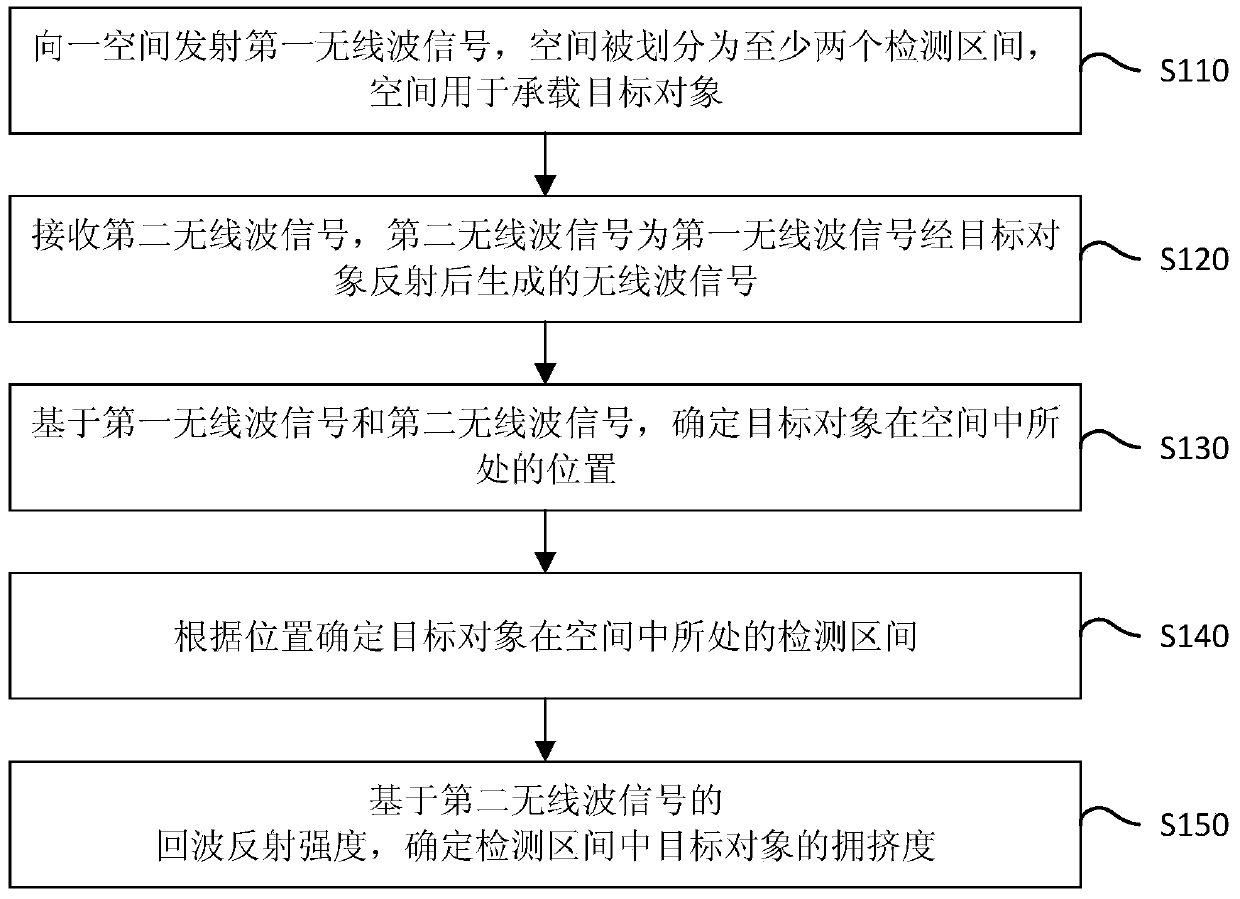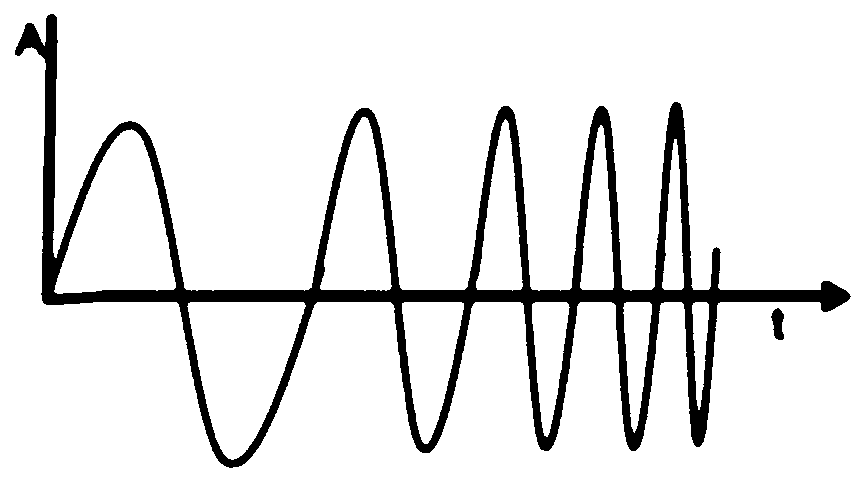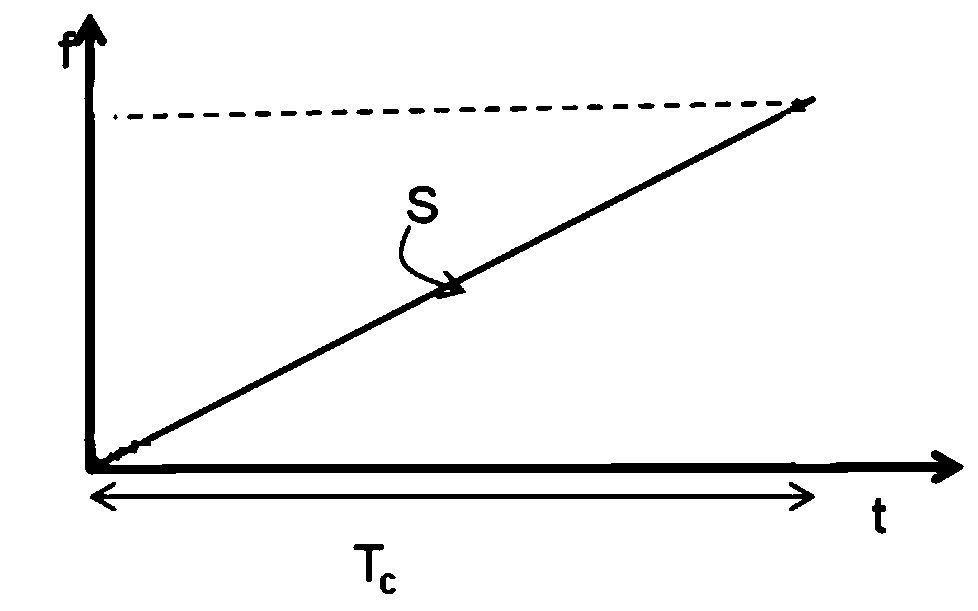Detection method for space congestion degree and scheduling method for lift car
A detection method and elevator car technology, applied in the field of space detection, can solve the problems of huge data processing volume and high cost, and achieve the effect of improving space utilization rate
- Summary
- Abstract
- Description
- Claims
- Application Information
AI Technical Summary
Problems solved by technology
Method used
Image
Examples
Embodiment 1
[0076] The first embodiment of the present invention provides a method for detecting spatial congestion. figure 1 This is a flowchart of a method for detecting spatial congestion provided in the first embodiment of the present invention, such as figure 1 As shown, the method specifically includes the following steps:
[0077] S110. Transmit a first radio wave signal to a space, the space is divided into at least two detection intervals, and the space is used to carry a target object.
[0078] Among them, the space can be an open space that is basically not covered by artificial structures, such as a square, a sports field, a material field, or a water area, or a non-open space, such as an indoor space, a waiting hall, a subway station or an elevator car, etc. The present invention is This is not limited. Space is used to carry target objects, which can be people, animals, and goods. The wireless wave signal can be sent by a wireless detector, and the wireless detector can be a rad...
Embodiment 2
[0123] Elevators are frequently used electrical appliances in modern life, but there are many unsatisfactory places in the existing elevator control methods. For example, when using an elevator in an office building, only when the actual load of the elevator reaches the rated load, the full load is displayed on the display screen of each floor, and it does not stop at any floor unless someone wants to get off the elevator. However, in actual use, it often happens that the actual load of the elevator has not reached the rated load but is very close to the rated load. At this time, the elevator will still stop at each floor where there is a hall call, but due to the actual congestion in the elevator car It is already very high. After the door is opened, most people waiting for the elevator will not choose to go to the elevator. That is, the elevator will stop and open the door on each floor, but no one will go to the elevator. Therefore, it will not only greatly affect the efficie...
Embodiment 3
[0164] The third embodiment of the present invention provides a space congestion detection device, Figure 13 This is a schematic structural diagram of a space congestion detection device provided in the third embodiment of the present invention, such as Figure 13 As shown, the detection device includes:
[0165] The transmitting module 310 is configured to transmit the first radio wave signal to a space, the space is divided into at least two detection intervals, and the space is used to carry the target object.
[0166] The receiving module 320 is configured to receive a second wireless wave signal, the second wireless wave signal being a wireless wave signal generated after the first wireless wave signal is reflected by a target object, and the second wireless wave signal has an echo reflection strength.
[0167] The position determining module 330 is configured to determine the position of the target object in space based on the first wireless wave signal and the second wireless ...
PUM
 Login to View More
Login to View More Abstract
Description
Claims
Application Information
 Login to View More
Login to View More - R&D
- Intellectual Property
- Life Sciences
- Materials
- Tech Scout
- Unparalleled Data Quality
- Higher Quality Content
- 60% Fewer Hallucinations
Browse by: Latest US Patents, China's latest patents, Technical Efficacy Thesaurus, Application Domain, Technology Topic, Popular Technical Reports.
© 2025 PatSnap. All rights reserved.Legal|Privacy policy|Modern Slavery Act Transparency Statement|Sitemap|About US| Contact US: help@patsnap.com



